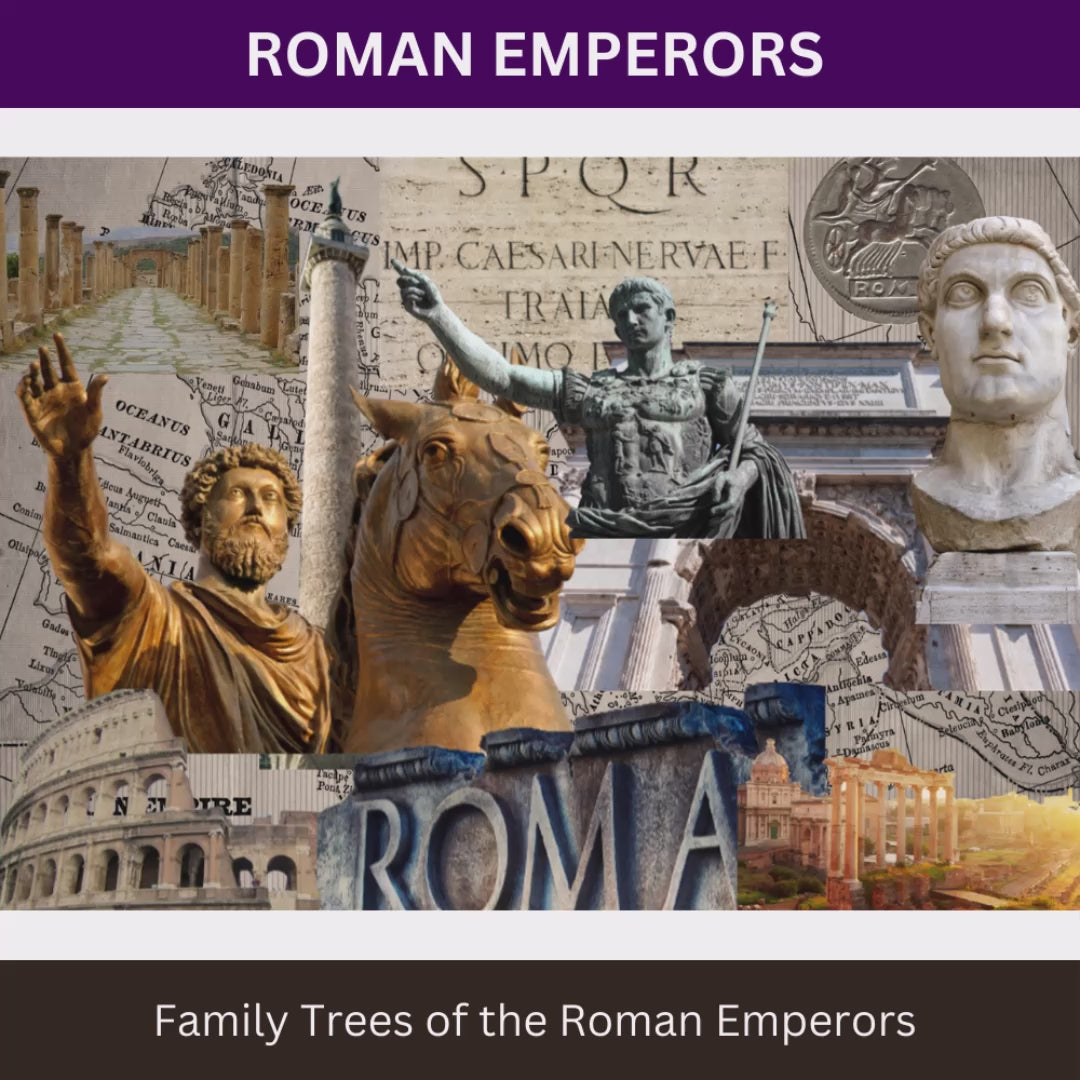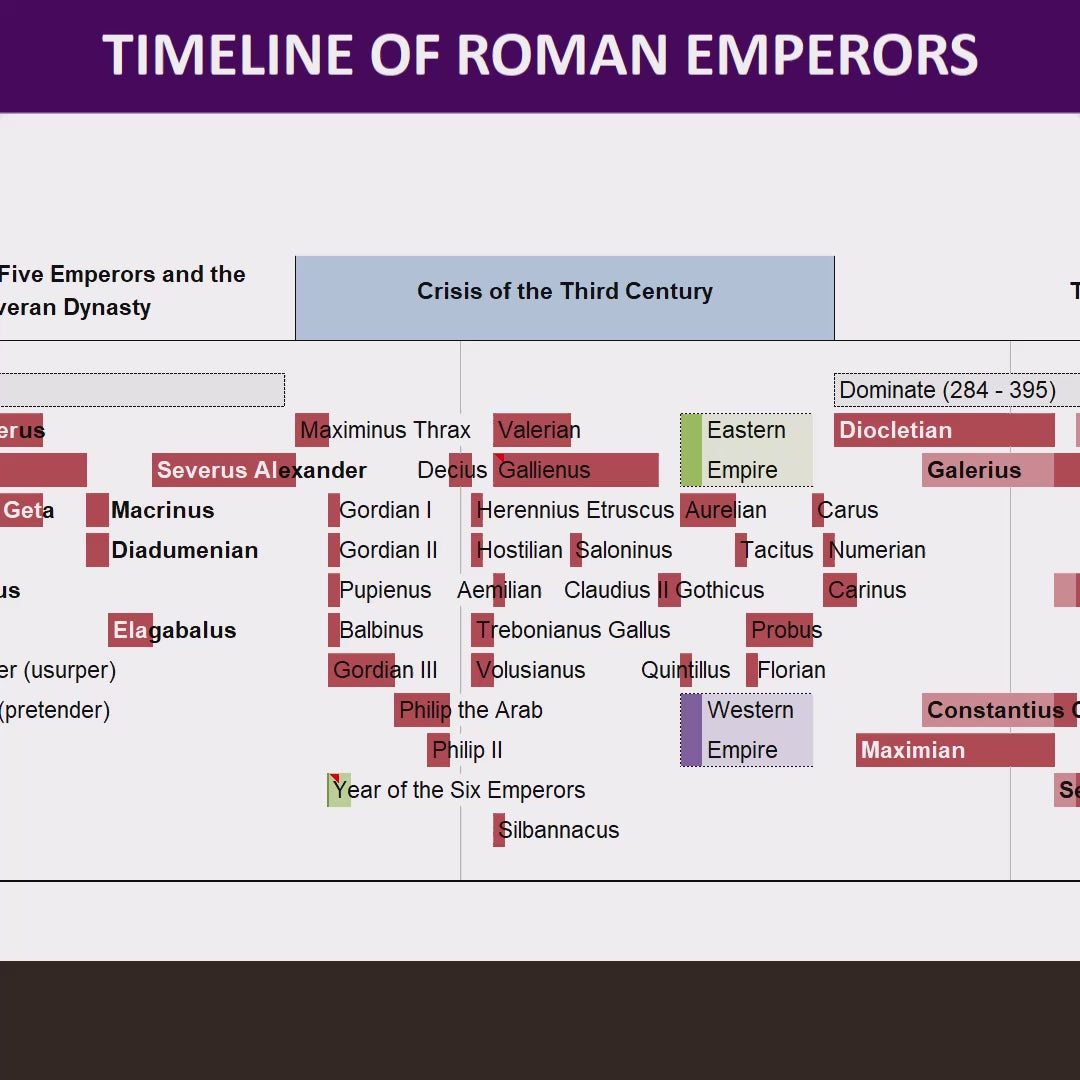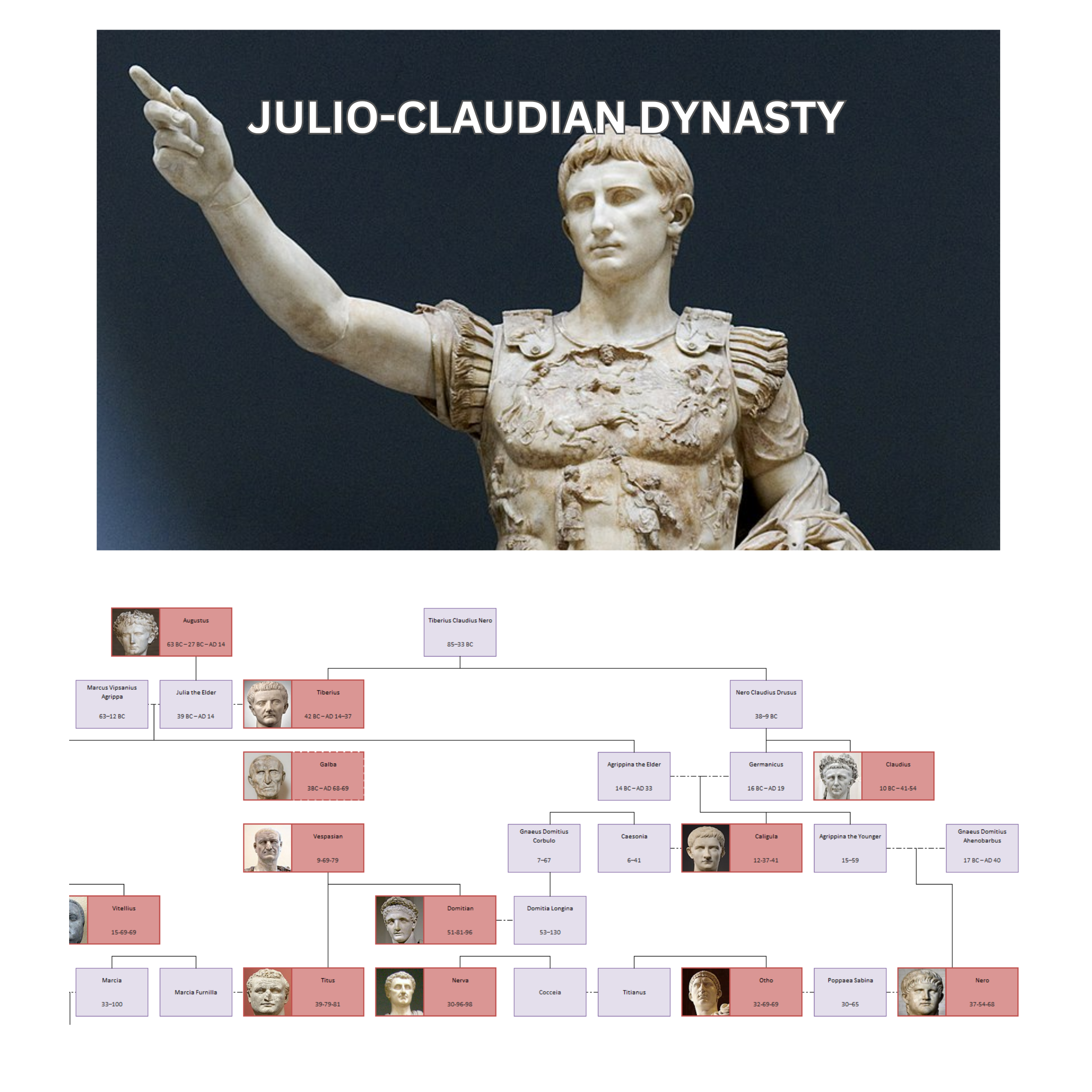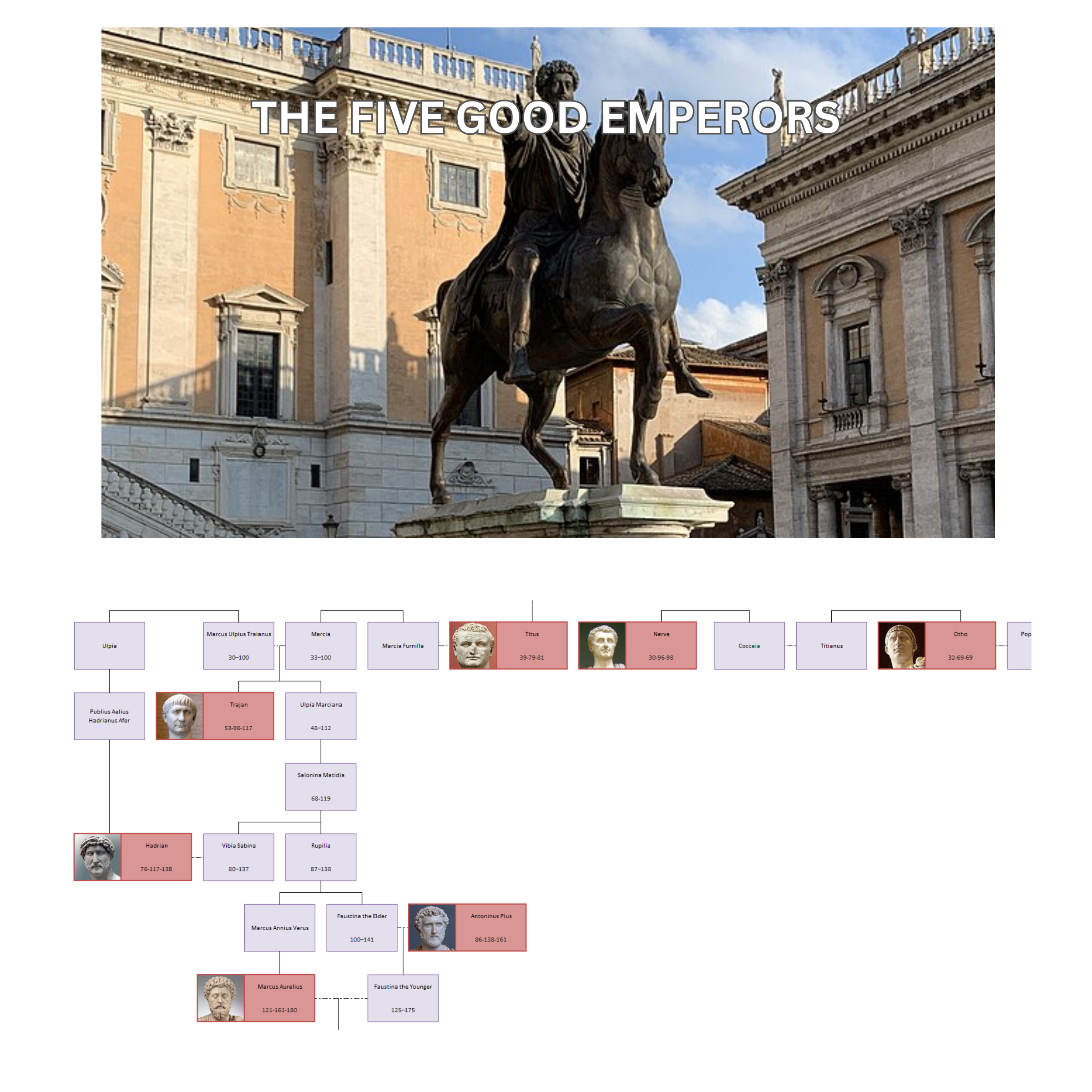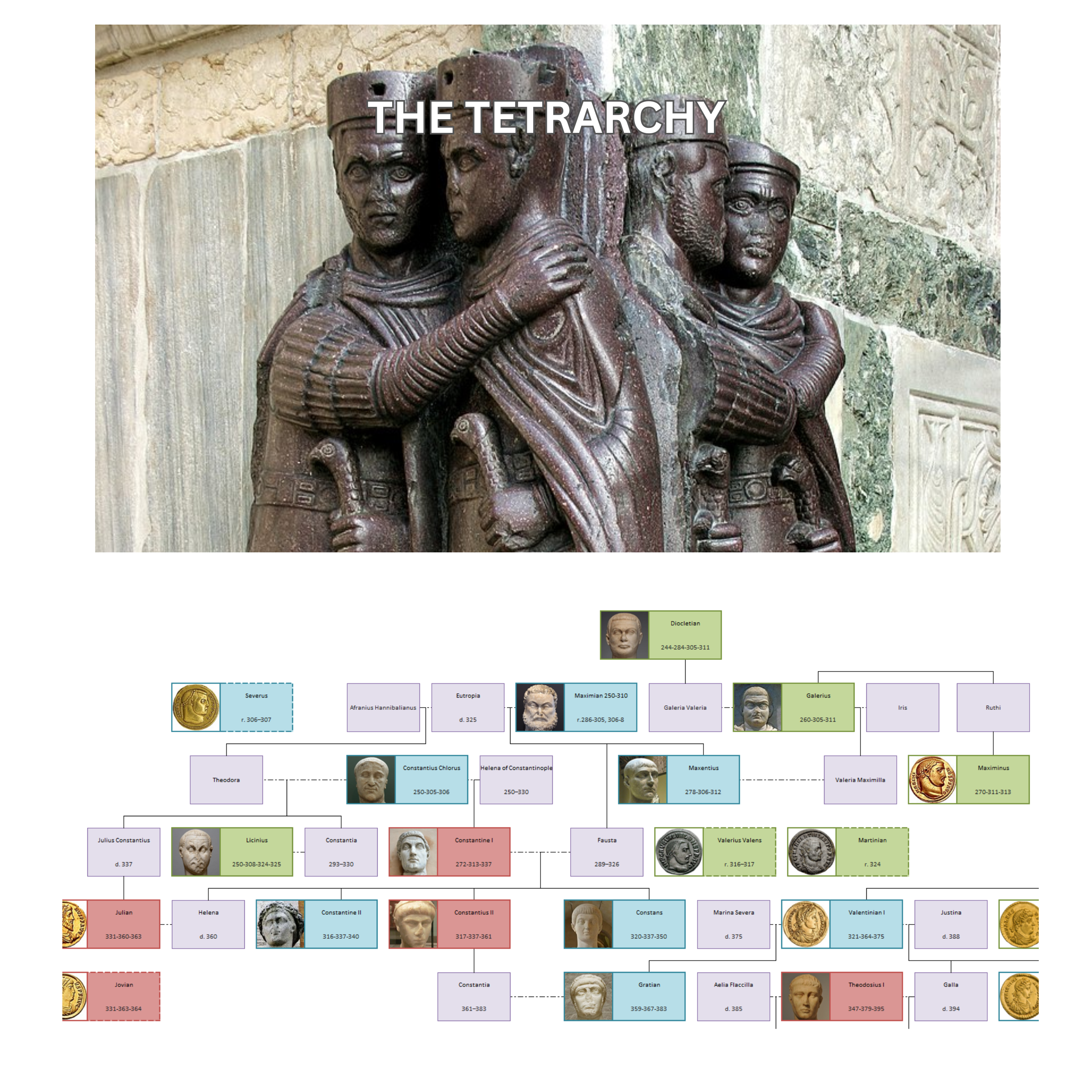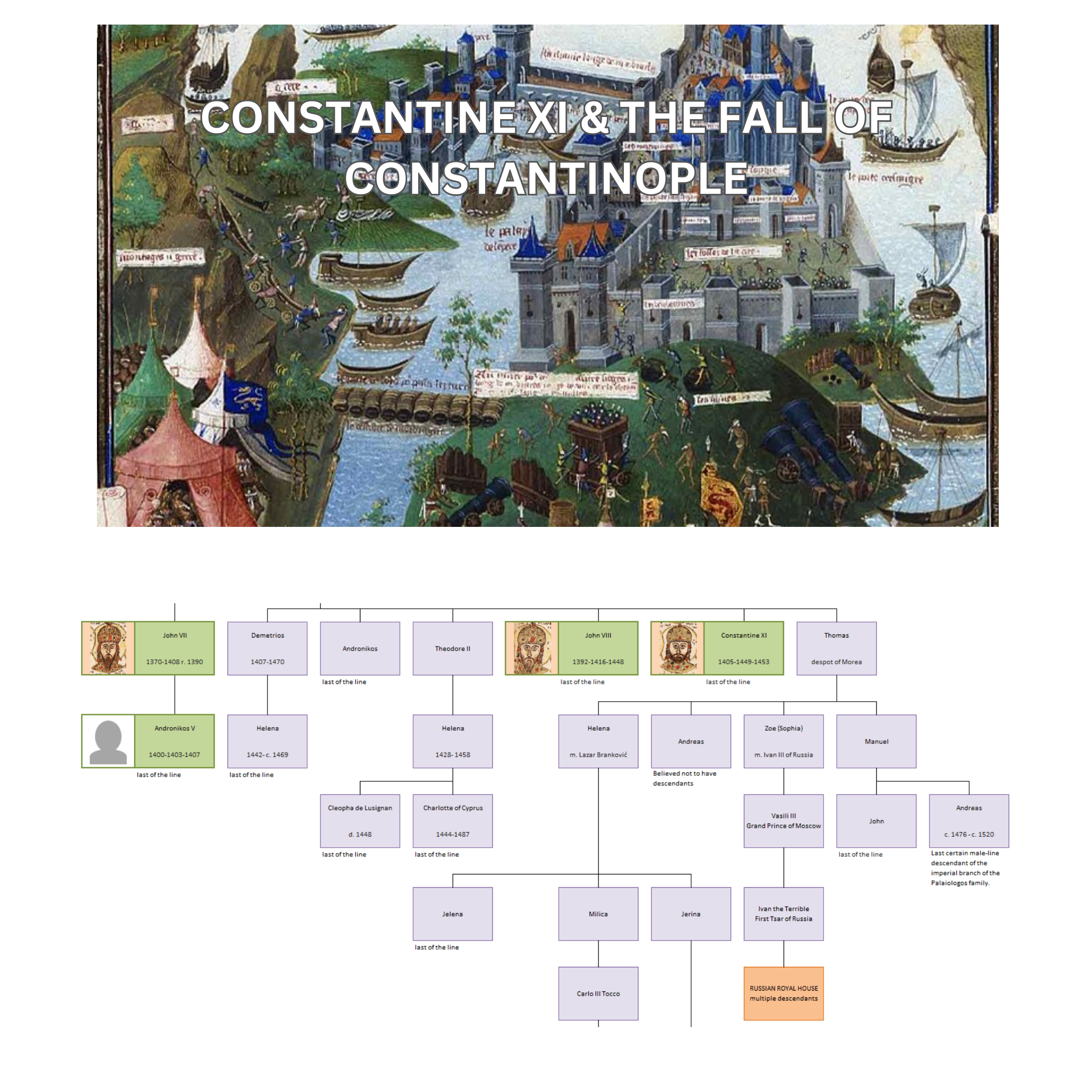Family Tree of the Roman Emperors
Family Tree of the Roman Emperors
 14-day Refund
14-day Refund
 Download fast
Download fast
 Editable file
Editable file
The Family Trees of the Roman Emperors includes the following features:
● List of all Western and Eastern Emperors including dynasty, name and dates of their reigns
● Timeline of Roman Emperors
● Julio-Claudian Family Tree
● Family Trees of the Emperors
- 27 BC – AD 192, Beginning of the Principate
- 192 – 235, Year of 5 Emperors & Severan Dynasty
- 235 – 284, Crisis of the 3rd Century
- 284 – 518, Beginning of the Dominate
- 518 – 717, Justin to 20 Years' Anarchy
- 717 – 1453, To the end of the Empire
With more than 400 unique names across seven family trees, there's much to explore.
Digital Download
This product is an instant digital download. No physical product will be received.
Colours may vary due to differences in screen calibrations.
Download Contents
File Name: Family Trees of the Roman Emperors
File Type: .xlsx (MS Excel spreadsheet)
File Size: 4.9MB
Couldn't load pickup availability
WHAT'S IN THE FAMILY TREE?
WHAT'S IN THE FAMILY TREE?
There are more than 400 unique entries in the Family Tree of the Roman Emperors.
Features include:
● List of all Western and Eastern Emperors including dynasty, name and dates of their reigns
● Timeline of Roman Emperors
● Julio-Claudian Family Tree
● Family Trees of the Emperors
- 27 BC – AD 192, Beginning of the Principate
- 192 – 235, Year of 5 Emperors & Severan Dynasty
- 235 – 284, Crisis of the 3rd Century
- 284 – 518, Beginning of the Dominate
- 518 – 717, Justin to 20 Years' Anarchy
- 717 – 1453, To the end of the Empire
SYSTEM REQUIREMENTS FOR THIS FAMILY TREE
SYSTEM REQUIREMENTS FOR THIS FAMILY TREE
Software:
The Family Tree of the Roman Emperors has been created using MS Excel.
For the best user experience the family tree should be viewed and edited using Excel.
The free online version of MS Excel can also be used to view the family tree.
Due to the size of the family tree, the viewing experience using the free online version of Microsoft Excel may be limited due to internet connection speed.
A free alternative to MS Excel is LibreOffice available for both PC and Mac computers.
Devices:
For the best experience, the family tree should be viewed on a laptop or desktop screen.
The family tree can also be used with Apple and Android tablets and phones.
However, please be aware that on a small screen, such as a phone, the viewing experience may be limited.
FREQUENTLY ASKED QUESTIONS
FREQUENTLY ASKED QUESTIONS
Can I still use the product if I don't have Excel?
To enjoy the full features of the family tree it is recommended you use the Excel desktop app which is part of Microsoft Office/Microsoft 365.
Mac users can use Excel for Mac.
A free alternative to MS Excel is LibreOffice available for both PC and Mac computers.
Do I need to have the most up to date version of excel?
If you have Microsoft Excel 2007 for PC or later, or Excel 2011 for Mac or later, you can use all the features of the family tree.
Do I need to be an expert in excel to be able to use the
products properly?
The Family Tree of the Roman Emperors is very easy to use.
Navigation instructions are included to help you move around family tree, but if you can use a mouse or touchscreen, you’re good to go.
Where do I find the instructions on how to use the Family Tree of the Roman Emperors?
Instructions are included as part of the family tree as a separate tab in the file.
Can I add my own entries to the Family Tree?
Yes, the Family Tree of the Roman Emperors will come to you as an editable file, so you can add as many new entries as you like.
Can I trust the quality of the information in the Family Tree?
Yes, all entries have been fact checked to the best of the
creator’s ability.
If however, you do find an error of any kind we would really appreciate you pointing it out to us.






Snapshots of selected areas of the Family Tree
The Julio-Claudian Dynasty
The Julio-Claudian dynasty, starting with Augustus, marked the birth of the Roman Empire. From Augustus’ rise from the chaos of Civil War following the death of Caesar, establishing the Empire, to Nero’s infamous rule, this dynasty’s story is a dramatic chapter in Rome’s early history.
The Five Good Emperors
The Five Good Emperors—Nerva, Trajan, Hadrian, Antoninus Pius, and Marcus Aurelius—ushered in a golden age for Rome. Their reigns were marked by wisdom, stability, and prosperity. From Trajan’s grand conquests to Hadrian’s fortifications and Marcus Aurelius’s philosophical reflections, their rule brought peace and effective governance to the empire.
Diocletian and the Tetrarchy
Diocletian created the Tetrarchy to manage the Roman Empire by dividing it into four regions, each with its own ruler. He and Maximian ruled the major parts as co-Augustus, while their deputies (Caesars) handled smaller regions. Although the Tetrarchy helped with administration, it faced problems and eventually fell apart. Diocletian’s attempt to reform the empire left a lasting mark on its history
Constantine XI and the Fall of Constantinople
Constantine XI Palaiologos, the last Byzantine emperor, is remembered for his heroic stand during the fall of Constantinople in 1453. As the city faced a relentless Ottoman siege, Constantine XI led his defenders with bravery until the end. His death in battle symbolized the tragic end of the Byzantine Empire and the rise of the Ottoman Empire.
Image Attribution: All images sourced from Wikimedia Commons



